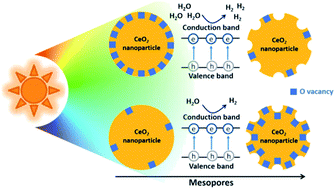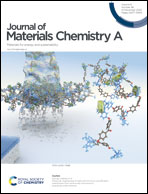New horizons in photocatalysis: the importance of mesopores for cerium oxide†
Abstract
The world faces an imminent energy crisis. The photocatalytic H2 production reaction is a promising process for addressing this issue, obtaining renewable and clean energy. Among the studies in this field, the dependence of photocatalytic activity on the O vacancy population of metal oxides is currently a subject of intense research. However, the pivotal role of mesopores in such dependence is not taken into account. In this study, CeO2 nanoparticles with and without mesopores were synthesized and characterized with Transmission Electron Microscopy (TEM), UV-Vis spectroscopy, X-ray Absorption Spectroscopy (XAS), and X-ray Photoelectron Spectroscopy (XPS) measurements, besides Density Functional Theory (DFT) calculations. It was found that the photocatalytic H2 evolution activity has a distinct dependence on the surface O vacancy population whether in the presence or absence of mesopores. Nanoparticles without mesopores present improved photocatalytic activity with a higher O vacancy population but the opposite behavior is found for nanoparticles with mesopores. Furthermore, the band gap depends closely on the Ce 4f orbital occupation, which is directly related to the structural disorder of the nanoparticles. The results shed light on the rational design of CeO2 nanoparticles with improved efficiency for photocatalytic H2 production.



 Please wait while we load your content...
Please wait while we load your content...